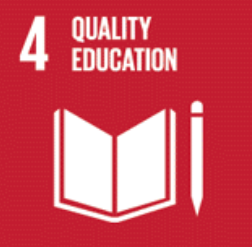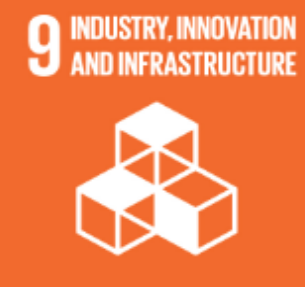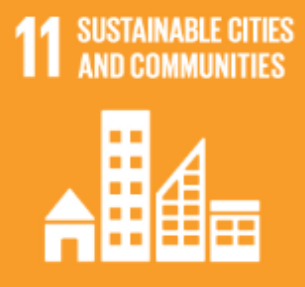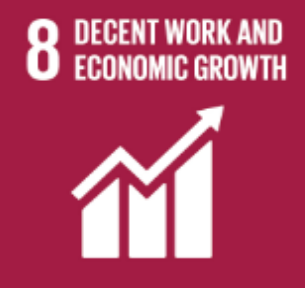TECHNOLOGY IN ALL AREAS OF SCHOOLING including in FET
- Karen Walstra

- Sep 24, 2019
- 10 min read
Updated: Feb 2, 2023

I presented this point of view in 2004, at the Maths Science and Technology Conference. Since then much has changed within the schooling curriculum, but still I think it is very relevant.
In my opinion, this subject - Technology - should be seen as vital across our schooling system.
I think we are doing our learners a disservice by not including it effectively within the schooling.
Not only was not not really integrated in the FET (Further Education and Training) Phase, but it is being removed from the Intermediate Phase now as well. This subject teaches children to think, to solve problems, to be creative. It builds confidence and inspired learning, as it relates to th real world.
TECHNOLOGY IN ALL AREAS OF SCHOOLING
(Learning Area Technology should be included in the FET)
2004 Maths, Science and Technology Conference
Author: Karen Ann Walstra
Main focus:
The focus of the Learning Area Technology is to encourage learners, both boys and girls, to think creatively, and learn to use the Technological Processes, to be able to think and plan when solving the problems. Technology was developed to encourage learners to enter fields of engineering and other technical professions. Technology should remove gender stereotypes, and develop the same skills among boys and girls. It is therefore a pity that at the end of Grade Nine Technology Education, as it has been developed in the GET band, is no longer applied and carried through.
TECHNOLOGY IN ALL AREAS OF SCHOOLING
At present Technology is taught from Gr. 4 to Gr. 9 as a separate learning area, this is fantastic and should be continued.
From Gr.R to Gr. 3 it is included in the three learning areas of Numeracy, Literacy, but mainly in Lifeskills.
However it has not been included in the FET Band. This should be reviewed for the benefit of our learners and for our economy.
Frank Banks, 1994 stated: “How do we describe, and educate our children for those human activities which bring about change, enhance the environment and generally get things done? What is the nature of capability in these activities, how can it be fostered and what kind of backup knowledge and experience is needed? How can future citizens be better equipped to foresee consequences and make choices?”
As learners travel the journey of education, we need to remember that we are educating our children for tomorrow, not for today.
Therefore it seems even more important for us to re-think the idea of including a general Technology subject in the FET band.
While technologies can improve the quality of life, by their very nature they may increase our dependency on them with unexpected consequences and even detrimental results. Therefore the advances in Technology need people who are socially and environmentally responsible, and understand the use of the products.
Learners need to be made aware of these issues and need to be encouraged to think critically, continually. This idea would have a greater impact on society if older learners were studying and investigating these issues.
As people living in the 21st Century, we are bombarded daily with having to make decisions about various consumer products. How can we assist learners to cope with the Technology of the future? Technology as an FET subject is a solution.
Why include Technology in the FET Band?
Some of the reasons for including the learning area Technology into the FET curriculum are:
Remove the stigma of women doing engineering or other technical professions. Including gender bias.
To encourage more females and males when completing their schooling to study engineering.
To remove the stigma and negativity related to “blue collar” jobs, and therefore encourage more young people into these professions.
To continue the problem solving ability and tasks which learners have developed in Technology in the GET band, and therefore into their future careers and lifestyles.
To continue exposing the learners to the various areas of Technology: structures, systems and processing, with an increasing level of difficulty.
In a rapidly changing world, to expose learners to products in their everyday lives, that they could investigate, explore, perhaps redesign and improve upon. These skills would assist them in their future careers.
To help learners to cope with changing Technology, and how the changes influence home, work and leisure life.
Encourage learners to become critical technologists of products that affect their quality of life and the environment (natural, rural and urban)
To encourage learners to solve problems that may affect their own and their communities standard of living and improve their quality of life.
Develop an ability to invent and construct useful and environmentally friendly products, which inturn enable people to live comfortably and safely in their environment.
Knowledge about Technology enables people to cope and work in various technological environments, it creates the desire for further technologoical learning.
Continue emphasising effective management of people, time and resources, which will assist learners to be effective and co-operative workers once they have finished their formal education.
It is important to South Africa’s economy that the work force is better educated in technological, problem solving and entrepreneurial skills.
Who should develop this curriculum?
When establishing an FET Technology curriculum all stakeholders should be included: various business, technical and engineering representatives, universities, technikons and technical colleges, and the GET teachers.
This will ensure that a balanced, constructive and appropriate curriculum is developed for the learners. Perhaps a modular approach could be developed with various options that schools could offer, and a core focusing on problem solving in the technological environment.
John Holt, in “How Children Fail” states, “Children get in the habit of waiting for teachers to show them how to do everything, so that they may continue by a process of blind imitation; they never learn how to get information.”
We as teachers need to guide learners but not give them all the answers. This method of teaching needs to be continued in the FET Technology curriculum.
Therefore the importance of developing a FET Technology subject would continue to allow learners to grow and develop their own thoughts and turn those ideas and thoughts into reality, they will experience obstacles, but these should be seen as challenges. The problems they solve should be related to the real world and solving of existing technological problems in South Africa.
John Holt states, “We agree that all children need to succeed: but do we mean the same thing? My own feeling is that success should not be quick or easy, and should not come all the time. Success implies overcoming an obstacle, including, perhaps, the thought in our minds that we might not succeed. It is turning, ‘I can’t’ into ‘I can, and I did’.”
With this in mind, the FET Technology curriculum should be general, exposing the learners to a wide variety of technologies. Learners should not be limited by the fields they have investigated, but rather should be stimulated to want to explore other, different technological fields, when they need to decide what they will eventually study or gain a trade in.
The FET Technology subject should be regarded as a Higher Grade subject, by the Universities, so therefore it is important that they assist with the development of the Technology curriculum.
What should the Technology curriculum include?
Rousseau (1762) stated: “If instead of keeping a learner at his books I keep him busy in a workshop, his hands labour to the benefit of his mind”.
The Technology curriculum should give the FET learners the opportunity to solution and design solutions, and then to develop them further into working models or solutions.
In 1991 the Goldsmiths Assessment Team made a similar comment, stating: ‘It is our contention that this inter-relationship between modelling ideas in the mind and modelling ideas in reality is the cornerstone of capability in design and Technology (Learning Area: Technology).
Therefore this is important for the learners to continue building and developing the skills of working both cognitively and physically right through school and not stopping at the end of the GET Band.
Technological literacy needs to be extended year by year, by means of giving the learner the opportunity to:
acquire technical and content knowledge
extend current knowledge by reflecting
build a capacity to theories
communicate solutions in various forms and using various media.
question and analyse existing proposals and solutions
persevere, to understand and resolve problems.
Technology Education but should be seen as an inter-relationship of:
technological knowledge and skills
technological awareness
technological capability
Technological knowledge and skills:
Technological knowledge and skills that the learners are taught and they acquire assist them to solve the problems as effectively as possible.
Technological awareness:
recognise the impact of Technology on societies, lifestyles and the environment
cares about the quality of products and the effects on the environment.
creates opportunities to enhance people’s lives by developing appropriate Technology
focuses attention on potential risks and hazards in a range of products and environments, and to take appropriate action to control these risks
develop personal awareness through - curiosity, diligence, perseverance, enthusiasm, responsibility and cooperation
recognise accomplishments of self and others, and to be capable of self-criticism and honest evaluation.
appreciate the benefits of a well designed and made products
care for and use tools, equipment and materials appropriately
Technological capability: involves being able to demonstrate the entire Technological Process. In the FET Band learners should investigate, explore and solve realistic problems and devise or suggest possible solutions.
Technology is taught through the method of problem solving using the Technological Processes as the core of the teaching method, where learners solve problems within a context.
In the FET Band, by Grade 12, the learners should be identifying the problems and coming up with realistic solutions. Therefore learners who take Technology as a subject should have achieved a level Technological literacy that would assist her or him in future years, and help him or her to make choices when deciding what fields of study to enter.
An FET learner who has studied Technology should complete the FET Technology subject with the curiosity to study further in one of the engineering or technical fields.
Another important focus of Technology in the FET Band is directed towards developing an understanding of the effects products have on the environment.
To make learners aware of the consequences of products and their uses have on the environment, both rural and urban.
The effect products have on the health and safety of consumers.
The effect of products, as a waste material, on urban and rural life.
The FET Technology Curriculum should also include a focus on indigenous Technology. Making learners aware of the different solutions of solving a similar problem, and also how the solution affected the quality of life of the people and the natural environment.
Importance of Technology for all learners
Eggleston (1995) suggests that every citizen needs to be familiar with a wide range of Technology in order to have sufficient understanding and capability to live effectively in modern society: electrical, financial, learner-rearing and architectural Technology - these and many more technologies determine the quality of life and range of opportunity of every citizen.
You may be thinking that Technology, as a subject, is not for all learners.
I think it is, including learners who may want to become doctors or lawyers.
Think of a doctor how often does she have to rely on information he has research to diagnose a patient. Or if he is a surgeon think how fine-tuned his fine motor skills need to be to operate accurately as well as thinking to solve problems daily.
Think of the learners who want to be a lawyer, they need to develop thinking and problem solving skills. So Technology will benefit the entire community and all the learners.
Science and Technology
Over the years the “battle” between Science and Technology to remain as separate learning areas, has been one of love and hate. Technology uses much scientific knowledge and skills, but it also relies greatly on mathematics and numeracy.
The reason Technology should be included as a separate subject in the FET phase is to continue the problem-solving approach in an environment that is realistic. As we know Technology is not about just about science, mathematics, craft skills, woodwork, metal work, home economics and designs. It is not an alternative to art or a practical science lesson. It is none of these, yet it encompasses them all and more.
It should be viewed more as a process or approach, which aims at teaching learners to identify needs or problems, propose, plan and work through practical solutions and to be able to evaluate the outcome. It is a process in which the actual production of objects, although often of central importance, is but one part of the whole.
Therefore in the FET phase we need learners to solve problems that are realistic and could be developed further, perhaps by government or industry, but we need the learners to continue solving the problems.
Eggleston (1995) puts it in this way, “This is the process of problem-solving which begins with a detailed preliminary identification of a problem and a diagnosis of needs that have to be met by a solution, and goes through a series of stages in which various solutions are conceived, explored and evaluation until an optimum answer is found that appears to satisfy the necessary criteria as fully as within the limits and opportunities available. The design process at its most complete is the one that can be used to describe, to analyse and hopefully to improve every aspect of human activity and especially those human activities that lead to end products and services.”
In a nutshell the Technological Processes involve following a path from problem to solution. It draws upon creative lateral thinking combining this with technological knowledge, skills and awareness to arrive at an end product. This product should be tested and evaluated. This is the type of learner that industry wants out in the market place not one who has just learnt but not practised. Science and Technology should work hand in hand, but remain on separate paths, each being recognised for its own status and role in education.
Conclusion
By encouraging both female and male learners to become aware and to get involved in technical, engineering and other similar fields, the universities and industry need to express what they feel is important for the learners to investigate and attempt to solve to prepare them for the very wide range of professions, which they could study. The learners should not be doing university tasks at school, but should be exposed to various fields to help with their final study choice. Eli Eisenberg, explained that, “the context dimension represents the essence of making any Technology Education programme relevant to the student’s life. In all Technology projects designed and developed, environmental issues, social and cultural considerations and economic constraints should be taken into account”.
Therefore we need to re-think the idea of Technology in the FET Band, as it would benefit our learners and the economy of the country.
Teaching technology across the school addresses many of the UNSDG
References:
Design Topics: Product Design. Atkinson.S.and Mockford.C. (1992). Oxford Univ. Press.
Curriculum 2005, Learning Programmes, Discussion documents: June 1997
The Scottish Office Education Department, Curriculum and Assessment, National Guidelines, Environmental Studies, 5 - 14. March 1993. Pg. 96, 97.
E. Eisenberg, Dr. ORT-STEP Institute: ESSENTIAL FEATURES OF TECHNOLOGY EDUCATION, International Conference on Technology Education for Development in South Africa, Cape Technikon in association with PATT Foundation, October 1996.
Technology 2005, HEDCOM Technology Education Project, 24 May 1996
Dr. D. P. Newton and L. D. Newton. Practical Guides - Technology Scholastic Pub. 1992. ISBN. 0-590-76824-4
Lincolnshire County Council. Collins CDT Foundation Course Collins Educ. 1992. ISBN. 0-00-322053-2
Schools Council Design and Craft Edu. Project, Edward Arnold, You are a designer 1971. ISBN. 0-7131-1804-0
J. Holt. HOW CHILDREN FAIL. Penguin Books, England, Pitman Publishing Company, 1964
#FET #technology #designandtechnology #school #SouthAfricancurriculum #curriculum #creativity #creativityresearch
























Comments